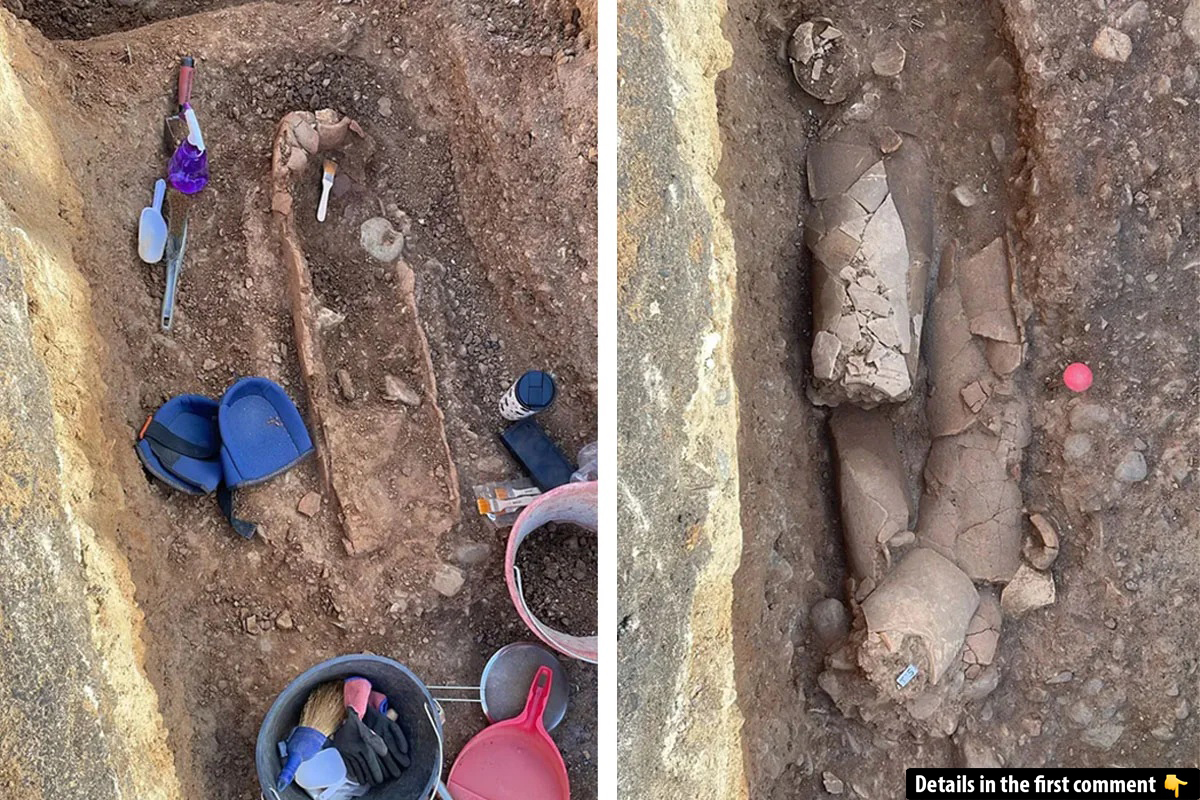In the heart of Sardinia, a 2,400-year-old discovery has emerged from beneath the modern roads and buildings of Sestu. During construction works for a new gas network, workers stumbled upon a Punic necropolis that could rewrite the region’s ancient history. The find, which includes six amphorae containing human remains, offers a rare glimpse into Punic burial customs and Sardinia’s role in the Mediterranean. As archaeologists work to uncover more, this unexpected discovery sheds light on a fascinating chapter of the past, forever linking the island to the legacy of Carthage.
Historical Context: The Punic Influence in Sardinia
Sardinia, situated in the central Mediterranean, has long been a crossroads of cultures and civilizations. The island was a significant area of interest for the Punic Empire, especially during the 4th and 3rd centuries BC. Carthage, one of the most powerful city-states of the ancient world, sought to extend its influence over Sardinia for its valuable mineral resources and fertile plains.
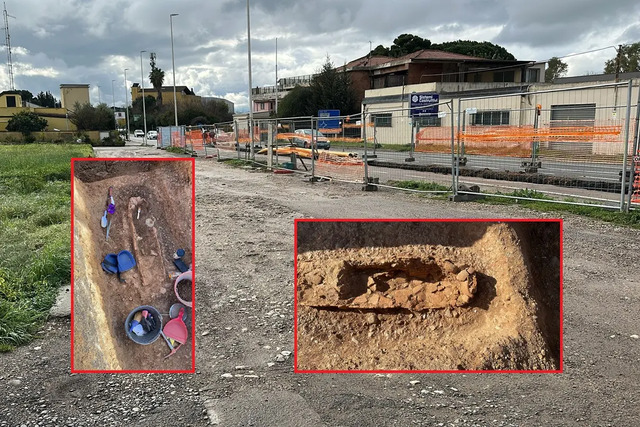
By 509 BC, Carthage had established control over much of southern and central-western Sardinia, a dominance that lasted until the Roman conquest in 238 BC. Sardinia’s geographic position and its rich resources made it a vital region for Carthage, and the discovery of the Punic necropolis adds an important layer to our understanding of this era.
Video
Watch the video revealing the discovery of a Punic jar burial necropolis in Sardinia – an incredible archaeological find!
The Excavation Process: Unearthing the Past

The accidental discovery of the Punic necropolis occurred during routine work to install a new gas distribution network in Sestu. Workers from the company Itargas, while digging, unearthed the first amphora, a type of pottery vessel commonly used by the ancient peoples of the Mediterranean. Recognizing the potential significance of the find, they promptly alerted the local authorities, leading to the involvement of the Archaeological Inspectorate. Archaeologists quickly mobilized to excavate the area, uncovering six well-preserved amphorae, each containing human remains. This unexpected find shed light on ancient burial practices and the cultural importance of this site.
Enchytrismos Burial Practice: A Unique Punic Tradition
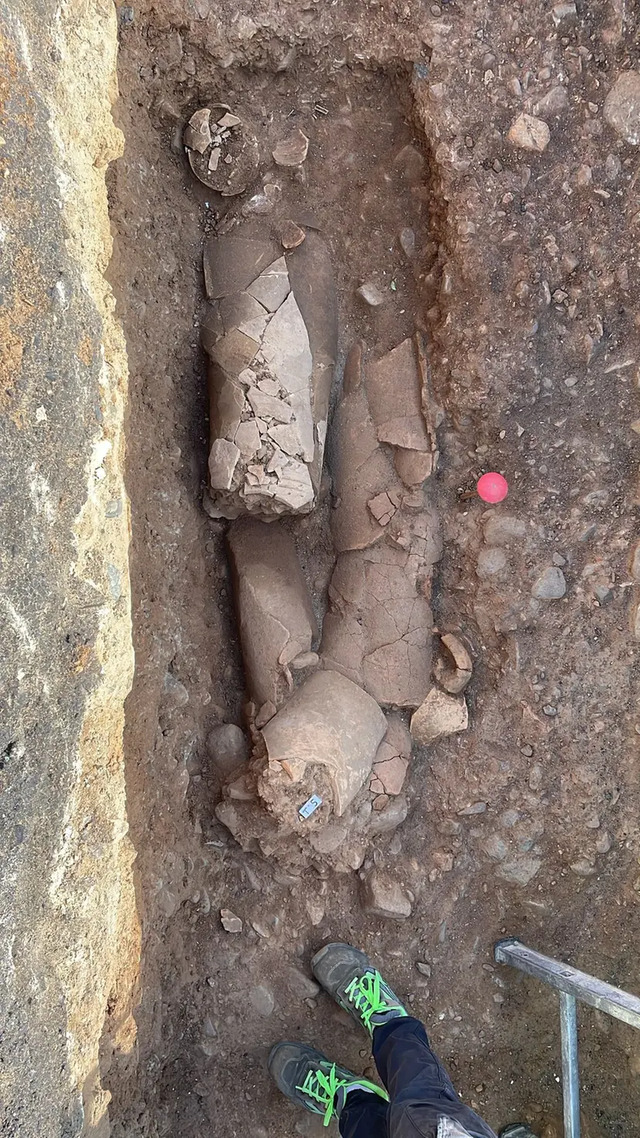
The burial practices uncovered in Sestu reveal much about the Punic people’s customs and beliefs. Among the most striking features of the necropolis were the amphorae containing human remains, a burial practice known as “Enchytrismos.” This custom was particularly common for the burial of newborns or young children, though adults were sometimes also interred in this manner.
The amphorae, often sealed tightly, were placed in pits carved into the natural bedrock, serving as a form of coffin or container for the deceased. The practice of Enchytrismos was widely observed in Punic cemeteries, offering insight into the community’s reverence for the deceased and their efforts to honor the dead in the afterlife.
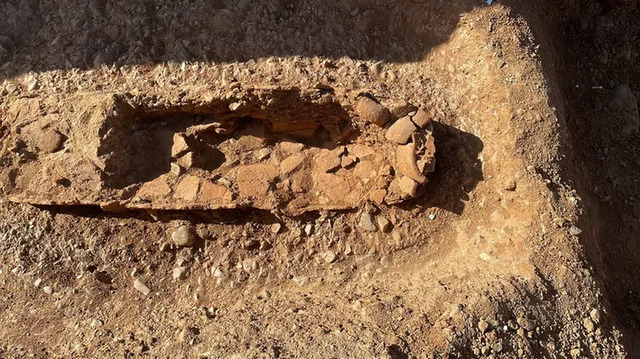
Key Findings: Amphorae and Human Remains
The excavation in Sestu uncovered six amphorae, each containing human bones. While the majority of the remains appear to belong to children, there are indications that some adult remains were also found.
This is not an unusual practice, as Punic societies sometimes buried individuals of all ages in amphorae, though children were the most common. Alongside the amphorae, archaeologists also discovered fragments of ancient ceramics, further enriching the archaeological context of the site. These artifacts provide valuable information about the people who lived in the region centuries ago and their material culture, allowing researchers to piece together a clearer picture of Punic life in Sardinia.
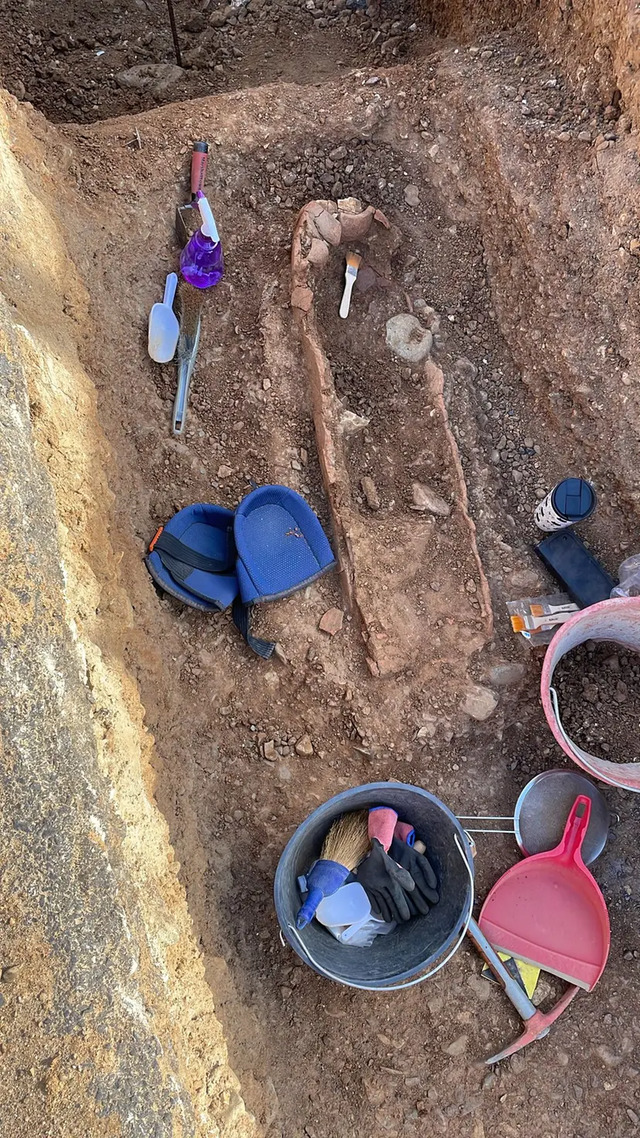
Challenges of Excavation: Limited Access and Preservation
Excavating an ancient site located beneath a modern roadway presents its own set of challenges. The necropolis in Sestu is situated near industrial and commercial buildings, making it difficult to fully uncover and explore the entire site. As the excavation continues, archaeologists must work carefully and strategically, prioritizing areas that offer the most potential for further discovery. Despite these limitations, the finds uncovered so far have been carefully documented and preserved, with the team working to secure the site and prevent any damage from the ongoing construction works. While a large-scale excavation is not feasible, the site offers a unique opportunity to study the Punic burial practices in greater detail.
Protection and Surveillance: Safeguarding the Site
Given the significance of the discovery, safeguarding the site has become a priority for local authorities. The excavation area has been placed under strict surveillance, especially at night, to protect it from potential looting or damage. The Carabinieri of Sestu and the Nucleo tutela del Patrimonio culturale, Italy’s cultural heritage protection unit, are overseeing the site to ensure its safety.
In addition to physical patrols, video surveillance cameras have been installed to monitor activity in the area. As construction on the gas network progresses, the excavation team continues to work diligently to uncover and document any further finds, preserving Sardinia’s rich cultural heritage for future generations.
Potential for Future Discoveries
While the discovery in Sestu is already groundbreaking, archaeologists believe there may still be more to uncover. The current excavation is just the beginning, and further exploration could reveal additional burial pits, artifacts, and insights into the Punic civilization. Although a full excavation of the site is unlikely due to the presence of modern infrastructure, future excavations in the surrounding area may offer new opportunities to learn more about this ancient society. The ongoing study of the human remains and ceramics could also provide further clues about the social, economic, and religious life of the Punic people, shedding light on a time long past.
Conclusion: A Peek into Sardinia’s Ancient Past
The discovery of the Punic necropolis in Sestu is a remarkable find that opens a window into Sardinia’s ancient past. It is a testament to the island’s rich history and the lasting influence of the Punic civilization, which once thrived in the Mediterranean. Through the careful excavation and preservation of the site, archaeologists are piecing together a story of life, death, and cultural practices that date back over two millennia.
While the full extent of the necropolis remains hidden beneath modern roads and buildings, the findings thus far are a valuable addition to our understanding of Sardinia’s historical landscape. As the excavation continues, future discoveries may reveal even more about the lives of the people who lived in this ancient corner of the world, offering us an even deeper connection to the past.
Video
Watch the video to explore the fascinating history of the Phoenicians and their impact on ancient civilizations!
